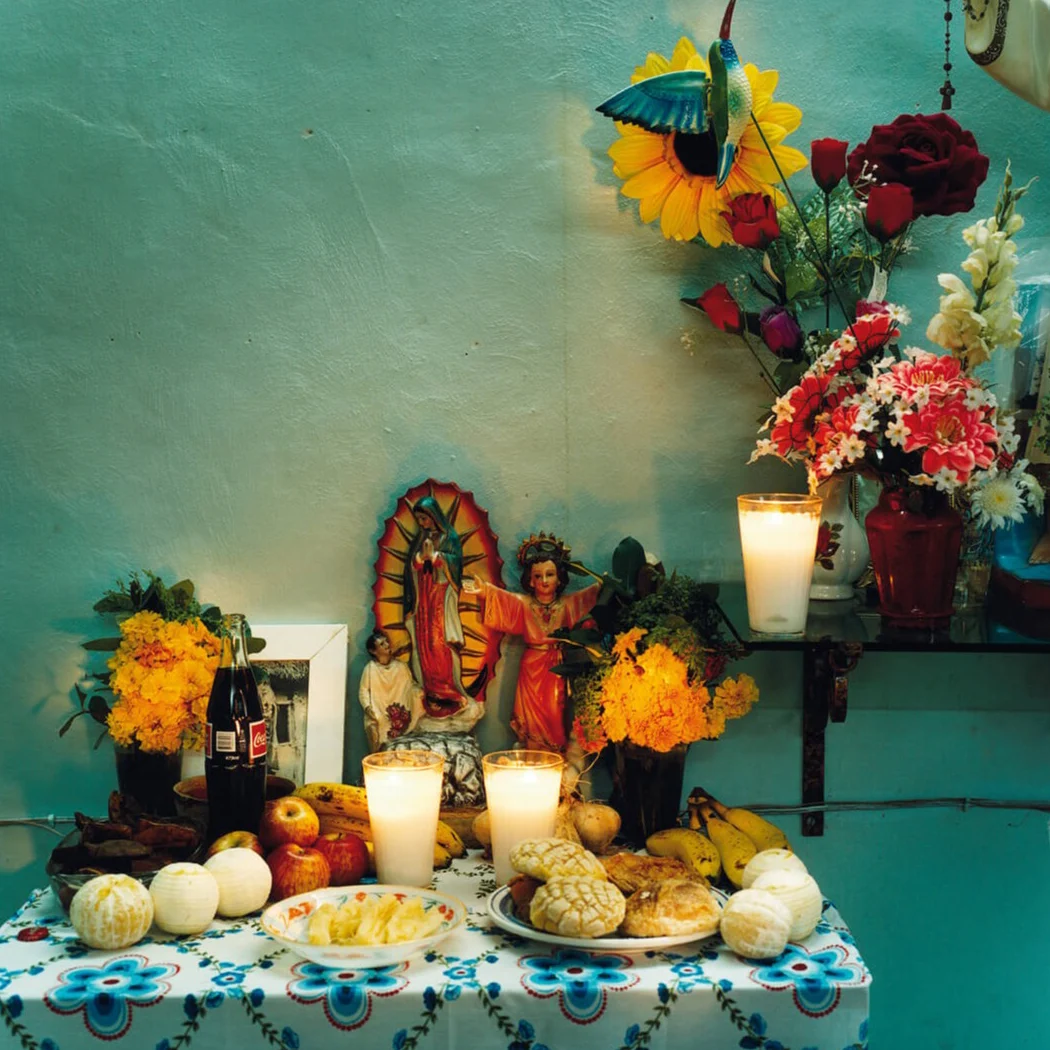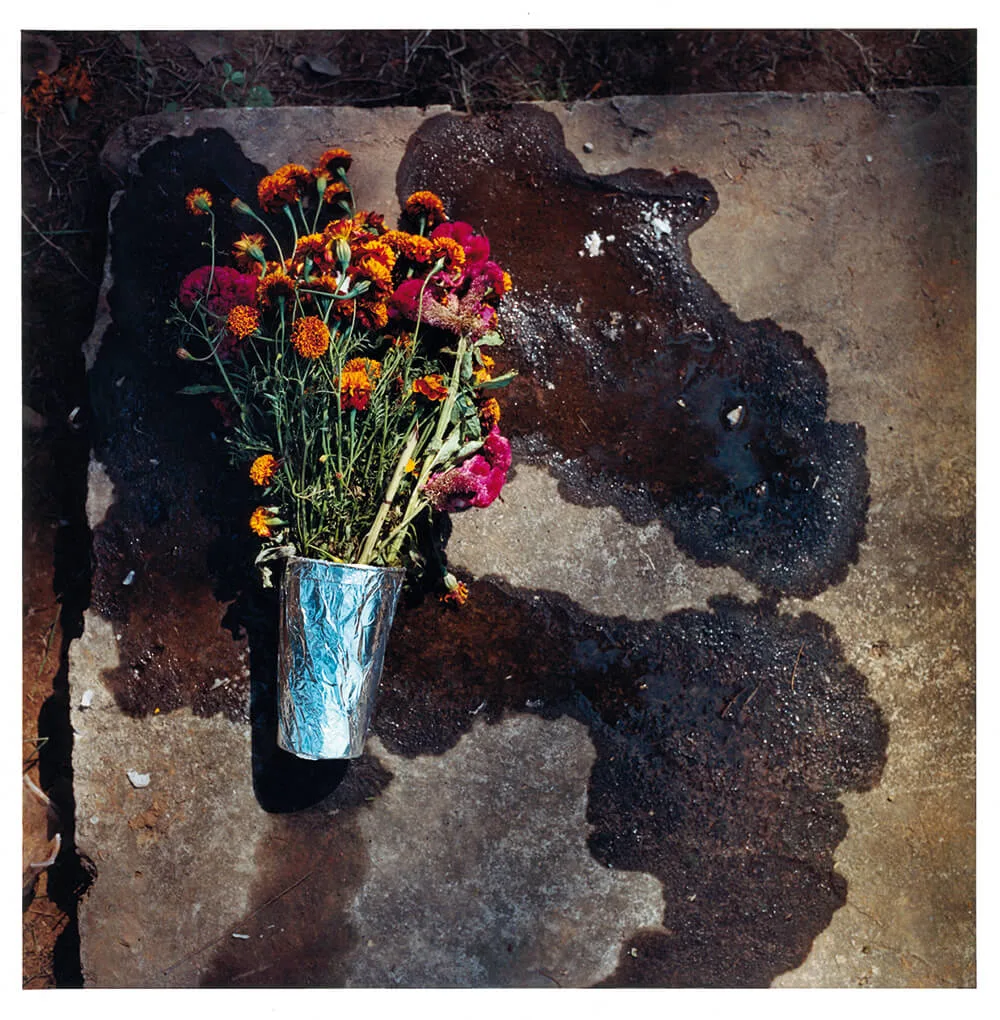

How do we deal with death? How do we process grief? How do we best remember those we’ve lost? Some questions are tougher than others, but Spanish photographer Tomás Casademunt doesn’t shy away from them.
For eight years in the early 2000s, the Barcelona-born image-maker traveled around Mexico photographing the altars created for the country’s Day of the Dead, or El Día de Muertos. It’s a ritual celebrating deceased loved ones, and it takes place every November 2nd.
Tomás’ resulting series La Muerte En Al Altar captures the tradition beautifully, showcasing dimly lit altars decorated with candles, flowers and picture frames. But, making the project wasn’t an easy process.


For a start these altars are personal, intimate and often private tributes to lost loved ones, hard to gain access to as an outsider. Secondly, they only exist for two days, once a year, so the series was built painstakingly.
On top of all of that, the Day of the Dead has become both more visible and less understood. Nowadays it’s a tourist attraction, a backdrop in adverts for tequila and British Airways, and even the opening sequence of one of the best James Bond movies of recent times .
Through these pop cultural references, people now think they understand the Day of the Dead. But the experiences Tomás had in small villages across Mexico – in Morelos, Michoacán, Oaxaca, Yucatán, Tlaxcala, Puebla and Guerrero – were quite different.
“On November 1st, all of Mexico is an enormous field of Aztec Marigold flowers,” he explains. “Their yellow petals make a path to guide the spirit of a dead family member back home.
“Candles are lit and copal is burned in honor of each dead person. These are days of both sadness and joy. Many people make a space in their homes, for an altar – either on a table or on the floor – and think about a friend who is no longer with them. They ‘live together’ with them in a psycho-magical act.”

The faces in the photographs stand out in a sea of flowers as a reimagining of life with all its colors.
The altars themselves vary from region to region. They are usually covered with white tablecloths or tissue paper and then the family adds pictures of the deceased, plus sweets, drinks, candles and maybe toys or work tools which say something about who the person was.
In some regions, the homes are opened to visitors who stop by to pay their respects; in other places it’s a much more private affair. “It was difficult to find these offerings that were hidden away in remote towns,” Tomás says. “I came across them through my stubborn and eventful searches along roads that can’t be found on maps.”
The pictures Tomás takes are simple in set-up. The altars are shot from the front, presented in a stripped-back way to speak for themselves. After all, much of their power comes from the viewer and our own feelings about life, death and love.
“I looked for altars with a strong spiritual presence,” he says. “In a way, they are portraits of ghosts, testimonies of love and metaphysical bonds. Presences that manifest in the silence of death and colored flames, bodies and absence.”

The only people we see are those in the photographs on the altars. This is very deliberate; Tomás hasn’t photographed people since 1992 (a series on Cuban musicians).
Instead, he’s more interested in objects and the energy they transmit, their “existential flashes” and “enormous spiritual force.”
In La Muerte En Al Altar, he wanted to tell a very human story without showing any humans. “I was striving for the strength the offerings were emitting, offerings made in an act of love, pain and nostalgia,” he says.
“All the dead are one; all the homes are one. The faces in the photographs stand out in a sea of flowers as a reimagining of life with all its colors, in the face of the brutal reality of death.”

They understood that the work would bear witness to their magical tradition, which is in danger of being lost.
Tomás always works on film – “silver is the great conductor of the metaphysical” – and uses light Hasselblad equipment to try and work as quickly as possible, aware of trespassing the intensely private rituals of the Day of the Dead.
“Although I showed respect and sensitivity when working, it was always strange for them to have a photographer in their homes at such an intimate time,” he says.
“They were generous towards me and understood the idea behind it, that the work would bear witness to their magical tradition, which is in danger of being lost.”
His Day of the Dead series has occupied Tomás’ life since 2001 and now he’s ready to move on. Before he does, he set up one last exhibition – at the incredible Hollywood Forever cemetery in Los Angeles.


Invited by the California campus of the National Autonomous University of Mexico (UNAM), Tomás was able to showcase his work in an amazingly atmospheric crypt in the run-up to the Day of the Dead in 2018.
The site obviously had particular resonance, but so did the city. LA has a huge Latino population, and of course Hollywood is the home of showbusiness, the epicenter of the culture increasingly using the Day of the Dead in a populistic, commercial way.
But rather than making big cultural points, Tomás’ ultimate aim with this final show was more personal. “I hope these photographs inspire people to set up an altar in their homes this year. I’ll be offering my parents the most pungent cheeses and the most fragrant flowers from my garden.”
Words by Rob Alderson.

